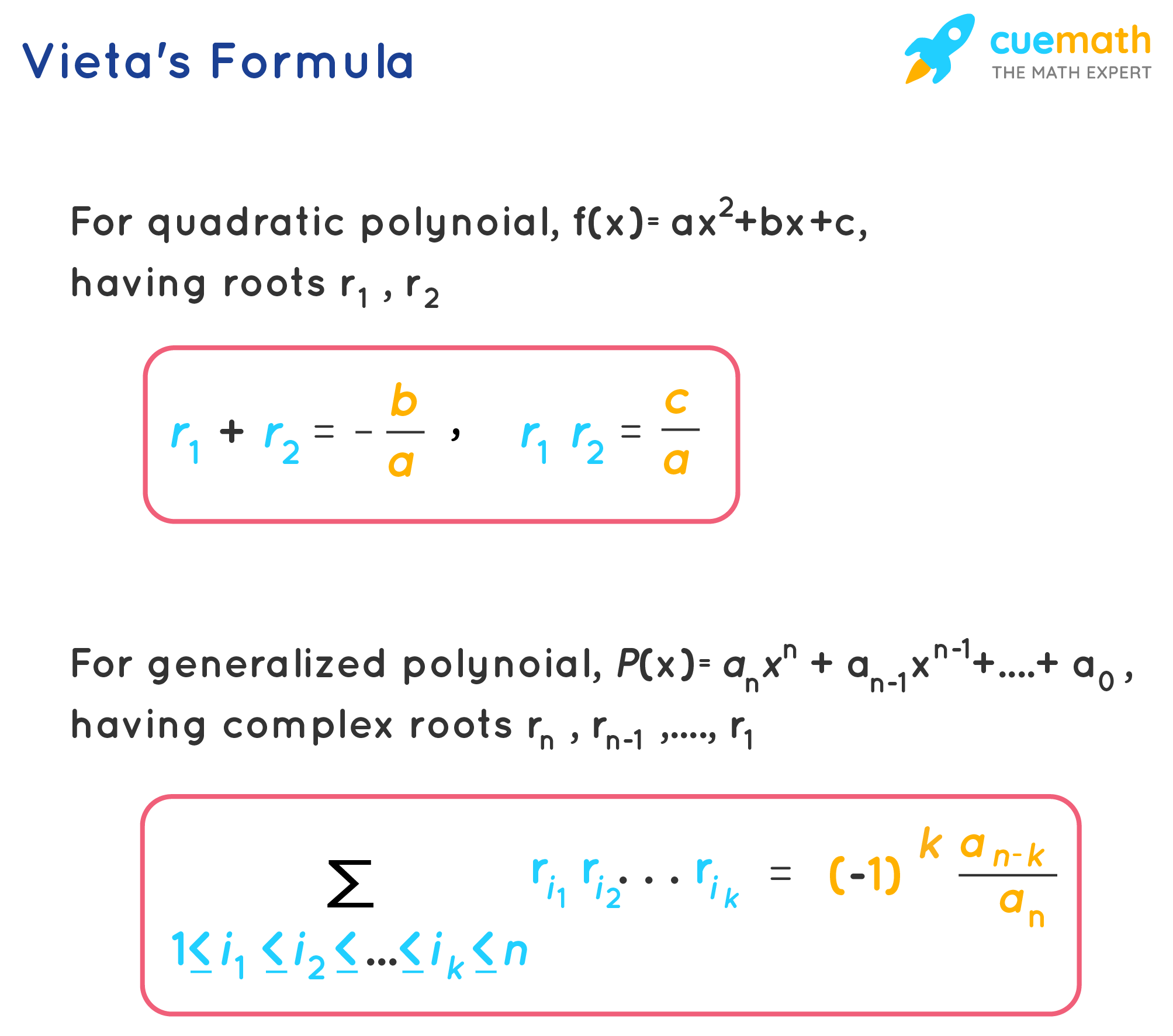

Vieta's Formula
Vieta's formulas, otherwise called Viète's laws, find application in relating the coefficients of polynomials to the sums and products of their roots, as well as the products of the roots taken in groups. It was discovered by Francois Viete. The simplest application of Viete’s formula is Vieta's formula in quadratics and is used specifically in algebra. Let us understand Vieta's formula in detail in the following section.

What is Vieta's Formula?
Vieta's formulas are a set of equations, relating the roots and coefficients of polynomials. Different Vieta's formulas for different cases are given as,
Vieta's Formula for Quadratics: Given f(x) = ax2 + bx + c, if the equation f(x) = 0 has roots f(x) = r1,r2, then
r1+r2=−ba,r1r2=ca
Vieta's Formula for Generalized Higher Degree Polynomials: Let P(x)=anxn+an−1xn−1+⋯+a0 be a polynomial with complex coefficients and degree n, having complex roots rn,rn−1,…,r1. Then for any integer 0 ≤ k ≤n,
∑1≤i1<i2<⋯<ik≤nri1ri2⋯rik=(−1)kan−kan.

Let us now look at a few solved examples on Vieta's formula to understand the concept better.
Solved Examples Using Vieta's Formula
-
Example 1: Consider the following quadratic polynomial p(x): x2−11x+22. Determine the sum and product of the roots using Vieta's formula.
Solution:
To find: Sum and product of the roots of the given polynomial
Using Vieta's formula,
Sum of roots = −coeff of xcoeff of x2 = −(−11)/1 = 11
Product of roots = constantcoeff of x2 = 22/1 = 22
Answer: Sum of roots = 11; Product of roots = 22
-
Example 2: The sum and product of the roots of a quadratic polynomial p are 9 and 20 respectively. Also, p(6) = 4. Determine the polynomial p(x).
Solution:
Note that in this problem, we have been given some extra information – the value of the polynomial at a particular x value.
Using Vieta's formula, substituting sum and product values, we can write the polynomial as p(x): k(x2−9x+20).
Now, p(6) = 4 ⇒ k(62 − 9(6) + 20) = 4 ⇒ k(36 − 54 + 20) = 4 ⇒ 2k = 4 ⇒ k = 2. Note: how the extra information enabled us to determine the value of k. Therefore, the polynomial is p(x): 2(x2 − 9x + 20). This implies, p(x): 2x2 − 18x + 40.
Answer: Polynomial p(x) = 2x2 − 18x + 40.
visual curriculum